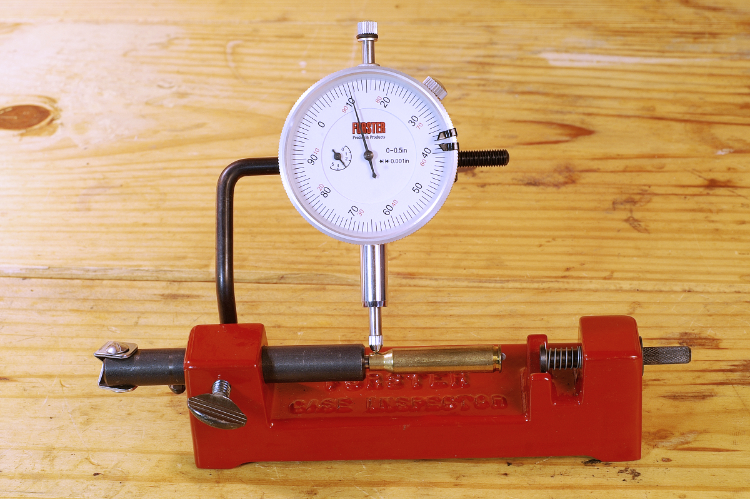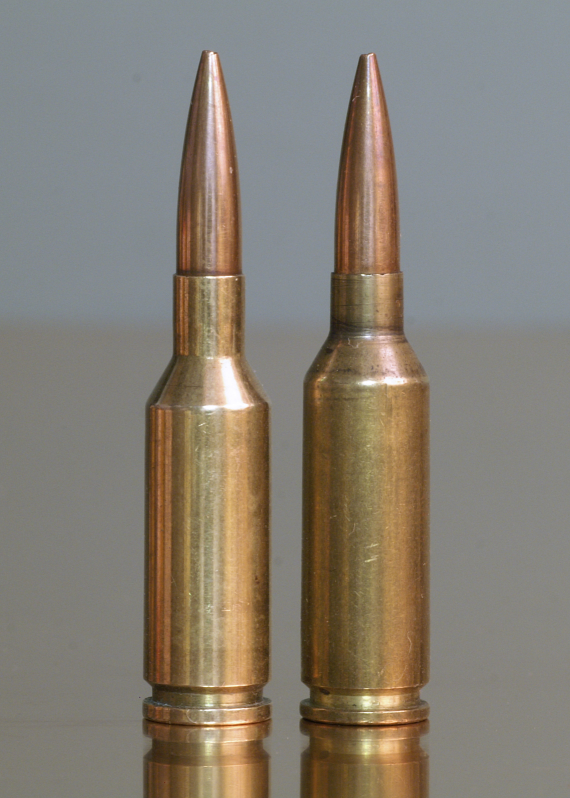New cases? Decisions you make before that first firing have a lot to do with future success. Read why (and how) HERE
Glen Zediker

The past few articles I’ve been begging indulgence from all the bolt-gunners out there by focusing on a few semi-auto-based topics, and so this time I’ll get to something of more interest to them (and it’s also of interest to “all of us”). In practical terms, which is living with reloads, it is at least of as much interest, or at least importance, to someone running an AR15 (if they’re looking to get maximum on-target performance from it). Subsequent case life has a lot to do with how you go about firing that first time.
So: definition: “Fire-forming” is a term usually associated with describing changing a cartridge from its original or “parent” state into another state, which is a non-standard cartridge, when it’s first-fired in the non-standard chamber. Like making an Ackley-Improved version of a standard cartridge, or converting a .250 Savage into a 6XC. In other words, the firing itself expands and reforms the case to the shape of the new chamber, and the case that emerges is then the new cartridge.
But! All cases are fire-formed to the chamber they’re first-fired in.
Details: Brass alloy is both plastic and elastic. That’s the “technical” reason changes in a fired case can and does occur in the first place. Plastic means that brass can expand and flow to fit the chamber, and retain its new shape. Elastic means that it doesn’t fully and completely mold itself to become a new mirror of the chamber. It “snaps back,” retracts from its maximum expanded form. If it didn’t it wouldn’t want to come back out of the chamber. That “snap-back” amount is predictably 0.001 inches.

On any rifle with a “standard”-dimension chamber, a new brass cartridge case will be smaller than the chamber. Has to be. It wouldn’t fit if it weren’t. A “standard” chamber, here, means there may and likely will be small variations from chamber to chamber (reamers vary uniquely, as might the operator’s preferences and judgment regarding how “tight” the headspace will be), but nothing intentionally has been done differently to alter the chamber beyond SAAMI-spec dimensional tolerances. Anyone who has loaded for the same cartridge for more than one rifle, and who has recorded pre- and post-fired case dimensions, knows that it’s common for there to be at least a thousandth or two, or more, variance. That’s all fine, as long as it’s within spec. Some custom-done barrels might have a chamber that’s intentionally different than SAAMI blueprints, and that’s a whole different topic.
Back to it: Since the brand-new cartridge case is smaller than the chamber it’s going into, it’s going to expand, grow. That’s clear.

So, there are two “forms” fire-forming can take. As said, no matter what else, all cases are formed to the chamber on their first firing. However, for some there can be some benefit from approaching that initial firing following a method or means to establish the set-in behavior of that case on subsequent firings and reloadings.
Here’s why some planning and procedure matters: Brass alloy has a “memory.” This is, more technically, called a “shape-memory effect,” and is shared by some other alloys also. It expands (and contracts) in a consistent pattern each use.
The first firing establishes that pattern. On subsequent firings, less is okay, but more is not. Lemmeesplain: I strongly recommend first-firing with a stout load, or at the least the stoutest load you plan on running through that case in future uses. When I segregate my new cases, I’m sorting them based on their function for me. My best go to the “600-yard” pile, then to 300 and then to short-line. Those are three different loads. I need to know which cases are for which before I make the initial loading. Fire-forming with a lighter load and then using a nearer-to-max load in that same case will, not can, result in premature failures in that case. It doesn’t seem to matter much going the other direction. I would never charge up my 600-yard load in a case formed using my 200-yard load; there are significant pressure differences in those two.
If it’s necessary to reform through firing, making a new cartridge case, there are a few different methods I’ve seen used, but, what really matters is that the case fully forms to the new chamber. The usual influential changes occur in the case neck and shoulder, and also stretching fore and aft. The bigger the change the more important it is to fire initially with a full-power load. For maximum effect, it’s better to fire-form with something closer to a “max” load than something lighter. Brass gets harder each use, less pliable. Starting life as a new cartridge after that first firing, case life is longer, and better, if the case was fully formed.

To aid that, a “trick” that helps a lot is to seat the bullet into the lands, firmly. The reason is because that already has the base of the case firmly seated against the bolt face. That prevents the primer strike from moving the case forward, resulting then in additional body stretching (beyond what already might be necessary). If it’s not the routine means used for bullet seating, this tactic requires a reduction in the load. When a bullet is moved from “just off” to “just on” the lands, pressure spikes at least equal to the value of 0.2-0.3 grains of propellant.
Glen’s books, Handloading For Competition and Top-Grade Ammo, are available at Midsouth HERE. For more information about other books by Glen, visit ZedikerPublishing.com








